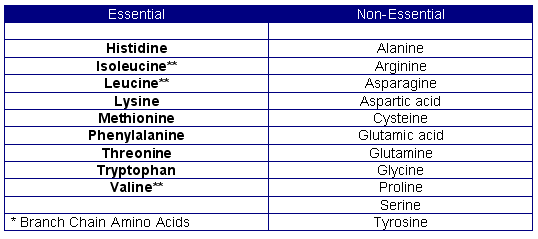
PROTEIN

Protein is an essential organic component of all living organisms and are the class of nutrients in highest concentration in muscle tissues of different species. All cells are able to synthesise (produce) proteins for part or all of their life stage. The percentage of protein required in the diet for neonatal (young) animals is extremely high and later declines with maturity, when only enough protein to maintain the bodies tissues are required (Pond et al., 2005). Proteins are made up from one or more polypeptide chains which consist of amino acids and are linked together by the peptide bonds. They can also combine with non-protein substances to form joined proteins such as haemoglobin (Agar, 2001). Haemoglobin is the protein molecule which is present in red blood cells and carries oxygen from the lungs to the bodies tissues and then returns carbon dixoide (waste product) from the tissues back to the lungs (Davis, 2015).
What is Protein?
(Google images, 2015)

Chemical and physical properties...
Chemical properties:
Protein chemical structure alter widely in chemical compostition and physical properties. All proteins are composed of simple units and amino acids, atlhough there are more than 200 naturally occuring amino acids and around only 20 are found in most proteins.
This is because only 10 are required in the diet for animals due to tissues synthesis is not adequate to meet metabolic needs. The basic structure of an amino acid is illustrated by glycine which is the simpliest amino acid (Pond et al., 2005).
Proteins are biological polymers which are composed of amino acids. These amino acids are linked together by bonds called "peptides" in which they can then form a polypeptide chain (Bailey, 2015).
There are two groups of amino acids these are;
-
Essentials
-
Non-Essentials

Polypeptide chain
(Google Images, 2016)
Sources;
Protein from plant materials makes up the largest portion of the typical feedlot diet, which the quality of this protein will vary with the source (Agri, 2007)
Proteins occur in both animals and plants e.g. muscle meat and beans. The quality or biological value is important as the higher values will be the better utilised by the body, which leaves fewer waste residues to be excreted (Agar, 2001).
Physical properties:
Physical properties are the characteristics that can be observed or measured without changing the composition of a particular sample. They are used to describe the; appearance, texture or colour (and more) of matter. In relation to protein they may include the following;
-
they are colorless and tasteless
-
they vary in shape and structure of two distinct patters
-
they act like the amino acids by exhibiting amphoteric property e.g. acting as acids and alkalies (Biology, 2015).
There are two physical property types of polypeptide chains these are;
-
An Alpha Helix = is a three dimensional polypeptide chain which looks like a tight coiled inside shape, which consists of rod-like structures. These are usually made to form hair on the body
-
A Beta Pleated Sheet consists of two or more straight chains of polypeptides which are bonded together side by side through a hydrogen bond. This formation constitutes to the formation fibrous proteins, such as forming nails and other similar structures to them (Protein structure 2015).
Essential amino acids
-
Essential amino acids cannot be made by the body. This means they must come from food.
-
The 9 essential amino acids are: histidine, isoleucine, leucine, lysine, methionine, phenylalanine, threonine, tryptophan, and valine.
Nonessential amino acids
-
"Nonessential" means that bodies must produce an amino acid, even if it is not consumed from the food we eat.
-
Nonessential amino acids include: alanine, asparagine, aspartic acid, and glutamic acid (Wax et al., 2015).

20 amino acids
(Google Images, 2016)
Uses and functions of protein;
Proteins are complexed organic compounds that are found in living cells. Numerous proteins are enzymes which catalyze biochemical reactions or hormones vthat is ital to cell metabolism.
Some prominent proteins that represent enzymes and/orhormones are pepsin, lactase, insulin and adrenalin. Other proteins such as collagen are important for extracellular structure whilst myosin is a good example for a protein that is associated to mechanical functions in muscle tissues. Other proteins not dicussed, are involved in cell signaling, immune response and cell adhesion.
The composition of protein: In line with carbohydrates and fats all proteins are composed of carbon, hydrogen and oxygen. Furthermore they all contain nitrogen, frequently sulfur and sometimes phosphorus (Feed additives, 2015)
